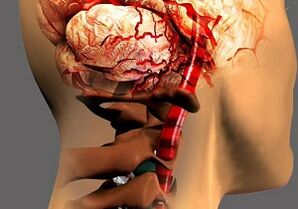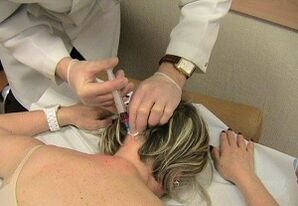Pathological conditions of the musculoskeletal system are more common than other known diseases. According to statistics, everyone after 40 experiences similar symptoms of the disease. Signs of cervical osteochondrosis are very common. Therefore, the symptoms and treatment of cervical osteochondrosis, as well as its causes, should be known by everyone to understand how to prevent the disease and eliminate the occurrence of complications.

What is cervical osteochondrosis?
Osteochondrosis is a disease characterized by changes in the intervertebral disc and dystrophy of cartilage tissue. In 25% of cases, osteochondrosis of the cervical spine occurs, which develops due to the structural features of this spinal segment.
The cervical region includes 7 vertebrae with different structures, located very close to each other. It is in this part of the body that complex movements are performed. In the cervical region, there are many peripheral and spinal nerves that affect the internal organs. In addition, the neck is saturated with blood vessels, the main channels pass here: the jugular vein, the carotid artery and the vertebrae. Often, with pathology, the vertebral arteries suffer, which are involved in the supply of blood to the brain.
The involvement of vessels and nerves in this process leads to the development of serious complications (cerebral ischemia, stroke), therefore, timely identified signs and treatment of cervical osteochondrosis are important medical and human health problems.
Causes and symptoms of the disease
The causes of cervical osteochondrosis are many, but all of them contribute to an increase in load on the neck area or cause changes in the structure of the vertebrae themselves. They are:
- posture violations;
- overweight;
- inactive lifestyle;
- spinal cord injuries;
- increased physical activity;
- pressure;
- poor physical fitness;
- genetic predisposition;
- muscle excess while working;
- hormonal disorders;
- metabolic changes;
- poor nutrition;
- anomalies and deformities of the cervical spine;
- spinal diseases.
Clinical signs of pathology are associated with structural features of the cervical segment of the spine. Even the smallest pathological process leads to symptoms. Often, patients complain about:
- pain in neck, back of head, arms and shoulders, head;
- hand weakness and impaired sensitivity;
- limitation of movement in the neck and upper limbs;
- convulsions when turning and tilting the head;
- dizziness;
- lack of coordination;
- weakness;
- changes in hearing, vision.
Stages of osteochondrosis

The degree of pathology is due to clinical manifestations and complaints.
- 1 degree. No symptoms. There is a slight pain and discomfort in the neck, which increases with movement. Muscular overtrains are slightly defined, which is associated with pinched nerves and the development of radicular syndrome.
- Grade 2. The patient is concerned about severe pain in the neck, radiating to other parts of the body and caused by a decrease in the distance between the vertebrae and pinching of the nerve. Also, there are headaches, severe general weakness and decreased performance. This is due to the addition of vertebral artery syndrome (it is involved in pathological processes).
- 3 degrees. The symptoms were getting stronger, getting worse, the pain was constant and unbearable. There is a violation of the sensitivity of the upper limbs, weakness, limited movement of the cervical segment. This is due to the development of an intervertebral hernia.
- 4 degrees. The intervertebral disc is completely replaced by connective tissue, which causes pain, stiffness, tinnitus, impaired vision, hearing and constant coordination. Brain disorders and constant movement are characteristic.
Symptoms and pictures of cervical osteochondrosis indicate the severity of the pathology, so when the first signs appear, be sure to see a doctor.
Treatment

Symptoms and treatment of cervical osteochondrosis are interrelated concepts, as therapeutic methods cause a decrease and disappearance of symptoms. The disease can be completely cured only in the early stages, but during this period, very few seek help. In other cases, therapy can stop further degenerative-dystrophic changes, reduce symptoms and prevent the development of complications.
Many people wonder how to treat the symptoms of cervical osteochondrosis. There is no definite answer, as each patient is individual and the method of treatment should be chosen for each particular case. But all the principles of therapy are reduced to relieving inflammation and pain, relieving muscle spasms, increasing blood supply and nutrition to the cervical spine, and strengthening the musculoskeletal system.
Main treatment methods:
- taking medication;
- physiotherapy;
- massage;
- Exercise therapy.
Medications:
- NSAIDs (relieve inflammation and pain);
- Vitamin B (increases metabolism and nutrition of nerve fibers);
- muscle relaxation (relieving muscle spasms);
- chondroprotectors (stop the destruction of cartilage tissue and contribute to its recovery);
- warming creams and ointments (relieve pain and muscle cramps).
You should not be limited to just taking medication. It is important to use all methods of therapy thoroughly and systematically. The combination of medications, massage therapy and exercise helps achieve quick results and helps maintain the effects obtained over a long period of time.



































